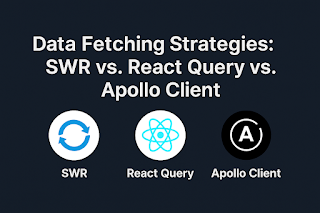Why FastAPI is the Future of Python Web Development
In recent years, Python has continued to dominate the world of web development due to its simplicity, readability, and vibrant ecosystem. While frameworks like Django and Flask have long held the spotlight, a newer contender—FastAPI—is taking the developer community by storm.
Built for high-performance APIs with modern Python features, FastAPI is redefining how backend development is done. But what makes it so special? And why is it widely considered the future of Python web development?
Let’s dive in.
What is FastAPI?
FastAPI is a modern, high-performance web framework for building APIs with Python 3.7+ based on standard Python type hints. Created by Sebastián Ramírez, it leverages Starlette for the web layer and Pydantic for data validation.
From its intuitive syntax to blazing-fast response times, FastAPI is designed for speed, developer happiness, and production-ready scalability.
Key Features of FastAPI
1. Blazing Fast Performance
FastAPI’s name isn’t just branding. Thanks to asynchronous support (async/await) and efficient architecture, it's comparable in performance to Node.js and Go. This makes it one of the fastest frameworks in the Python ecosystem.
2. Automatic API Documentation
Out of the box, FastAPI integrates with OpenAPI and ReDoc to provide interactive API docs. Developers get real-time, auto-generated documentation without the need for extra boilerplate.
3. Type Hinting + IDE Autocompletion
By leveraging Python’s type annotations, FastAPI delivers:
- Better editor support with autocompletion
- Automatic validation and serialization
- Reduced runtime errors
Your code is not only cleaner but also smarter.
4. Asynchronous Programming Support
Built natively on asyncio, FastAPI allows for building non-blocking applications, ideal for:
- Real-time dashboards
- Chat apps
- IoT devices
- High-throughput APIs
5. Powerful Dependency Injection
FastAPI includes a built-in, flexible dependency injection system, making code more modular, testable, and reusable—a rare feature in many Python frameworks.
🛠️ When Should You Use FastAPI?
- You're building modern APIs or microservices
- You need asynchronous I/O and high performance
- You want automatic data validation and documentation
- You're working with machine learning, data pipelines, or real-time systems
- You prefer a lightweight, fast alternative to Django
FastAPI vs Flask vs Django

Real-World Use Cases
- FastAPI is being adopted by top tech players:
- Uber uses it for internal API projects.
- Netflix, Microsoft, and Explosion AI (makers of spaCy) use it for performance-critical services.
- Machine Learning teams use FastAPI to serve models with frameworks like TensorFlow, PyTorch, and scikit-learn.
Quick Code Snippet
from fastapi import FastAPI
app = FastAPI()
@app.get("/")
def read_root():
return {"Hello": "World"}
Yes, that's all it takes to spin up a fully working API with docs!
The Road Ahead
FastAPI continues to grow rapidly, backed by an enthusiastic community, great documentation, and real-world adoption. It’s not just about speed—it’s about modern Python development done right.
Whether you're a startup founder, a data scientist, or a full-stack developer, FastAPI offers a future-proof solution for building web APIs that scale.
Final Thoughts
FastAPI isn’t just another web framework—it’s a paradigm shift. It unites performance, developer experience, and modern language features into one elegant package.
If you haven’t explored FastAPI yet, now’s the time. The future of Python web development is already here—fast, clean, and ready for production.
#Python #FastAPI #WebDevelopment #Backend #Microservices #API #APIDevelopment #MachineLearning #AsyncProgramming #AsyncPython #OpenSource #DeveloperTools #Programming




Comments
Post a Comment